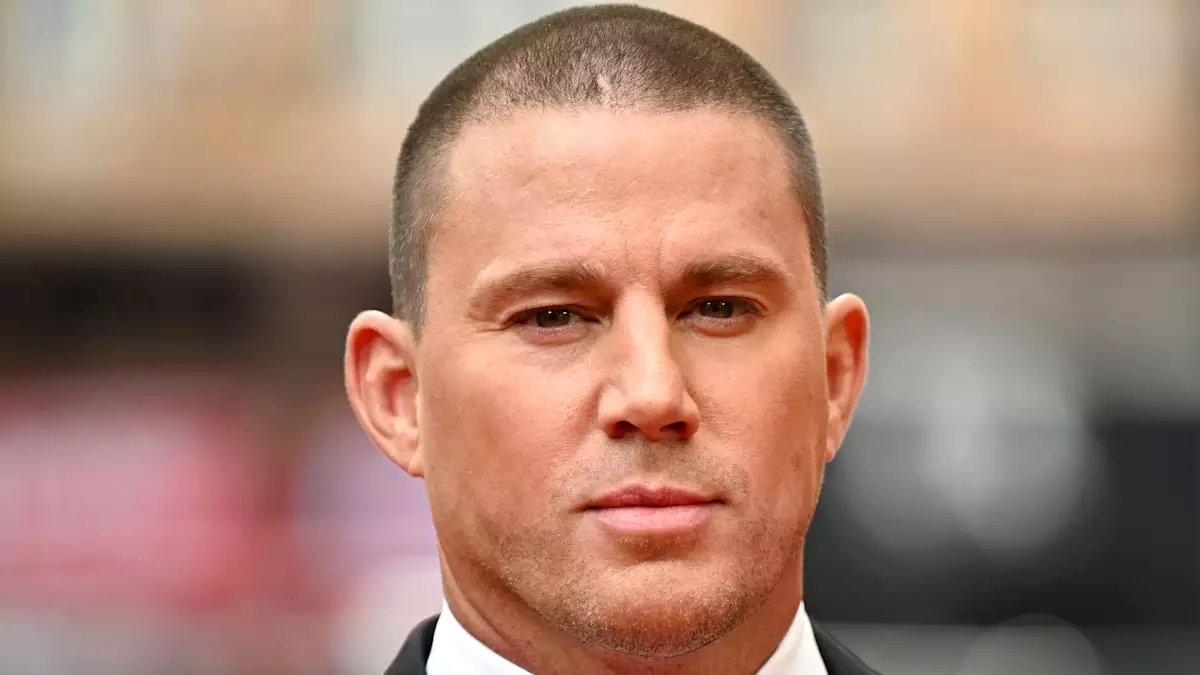Channing Tatum has embraced a distinctive aspect of performance art that revolves around dramatic body transformations, a practice that has become an alarming yet routine part of the Hollywood experience. Over the years, Tatum has been renowned for his athletic build, serving as an embodiment of fitness that aligns perfectly with his roles, such as his memorable performance in *She’s the Man* or the iconic *Magic Mike* franchise. However, his recent foray into extreme weight changes for two upcoming films, *Josephine* and *Roofman*, reveals a different dimension not only to physical fitness but also to the mental and emotional rigors associated with it.
Tatum’s candidness about his weight fluctuations is a refreshing deviation from the Hollywood norm, where many celebrities often gloss over the strenuous efforts behind their glamour. In a recent social media post, he shared three striking images depicting his dramatic changes in physique that range from a lean 172 pounds to a hefty 235. This level of commitment to his art not only demands extraordinary physical discipline but also reveals a narrative of struggle that echoes through his reflections on the process.
The Human Cost of Extreme Transformation
What stands out in Tatum’s journey is the juxtaposition of physical appearance and health, revealing an unsettling reality about weight fluctuation in Hollywood. The actor joked that his body was “wild” and expressed gratitude for his genetics, his cooking team, and trainers, yet there lies an undercurrent of caution in his acknowledgment of the toll such transformations can inflict. This candid self-reflection raises vital questions: How sustainable is this approach to physical transformation? What are the long-term consequences for health?
In a culture that venerates beauty and physique, Tatum’s experiences reflect the intense pressure felt by many actors to conform to a constant state of physical perfection. Yet he also hints at the physical toll this process demands, a view echoed by other actors such as Christian Bale, who have navigated similar trajectories. Bale’s declarations about his own experiences lend credence to the argument that the glamour of Hollywood often comes at an alarming price.
The Revelatory Power of Social Media
Tatum’s choice to disclose his body transformation journey on social media serves as a powerful narrative tool that challenges the unrealistic beauty standards pervasive in the industry. The responses from both celebrities and fans illuminate the variability of public perception regarding these transformations. While some marvel at Tatum’s ability to shift his body at will, others express concern for the psychological impact it may have, as well as well-meaning warnings against the physical dangers inherent to such extreme changes.
By engaging the public through social media, Tatum opens a dialogue about the pressures of body-image expectations in the arts and not only highlights his personal struggles but also encourages fans to reflect upon their own standards. In showcasing his transformation, he’s tacitly advocating for a more nuanced understanding of health that transcends mere aesthetic appeal.
The Future of Body Representation in Hollywood
With the backdrop of Tatum’s drastic changes comes an impetus for the entertainment industry to reassess its treatment of body image and the expectations placed on actors. As we watch public figures grapple with the extremes of physical representation, it becomes crucial for the industry to promote a culture that values well-being over appearances. Channing Tatum’s outspoken acknowledgment of the challenges tied to body transformations may be a stepping stone toward a more responsible depiction of health and fitness within cinema.
Given the emotional weight tethered to such physicality, Tatum’s body transformations open the floor to broader discussions about personal identity tied to physical forms. Performers are not merely vessels for artistic expression but are human beings with experiences that reflect the complex interplay between art and body image in a society that often reduces them to mere numbers on a scale.
Through Channing Tatum’s journey, we are reminded that while drastic transformations can exemplify artistic dedication, the discourse surrounding such physical changes is essential to ensure we respect the fundamental ethos of health over mere aesthetic allure in the realm of entertainment.

